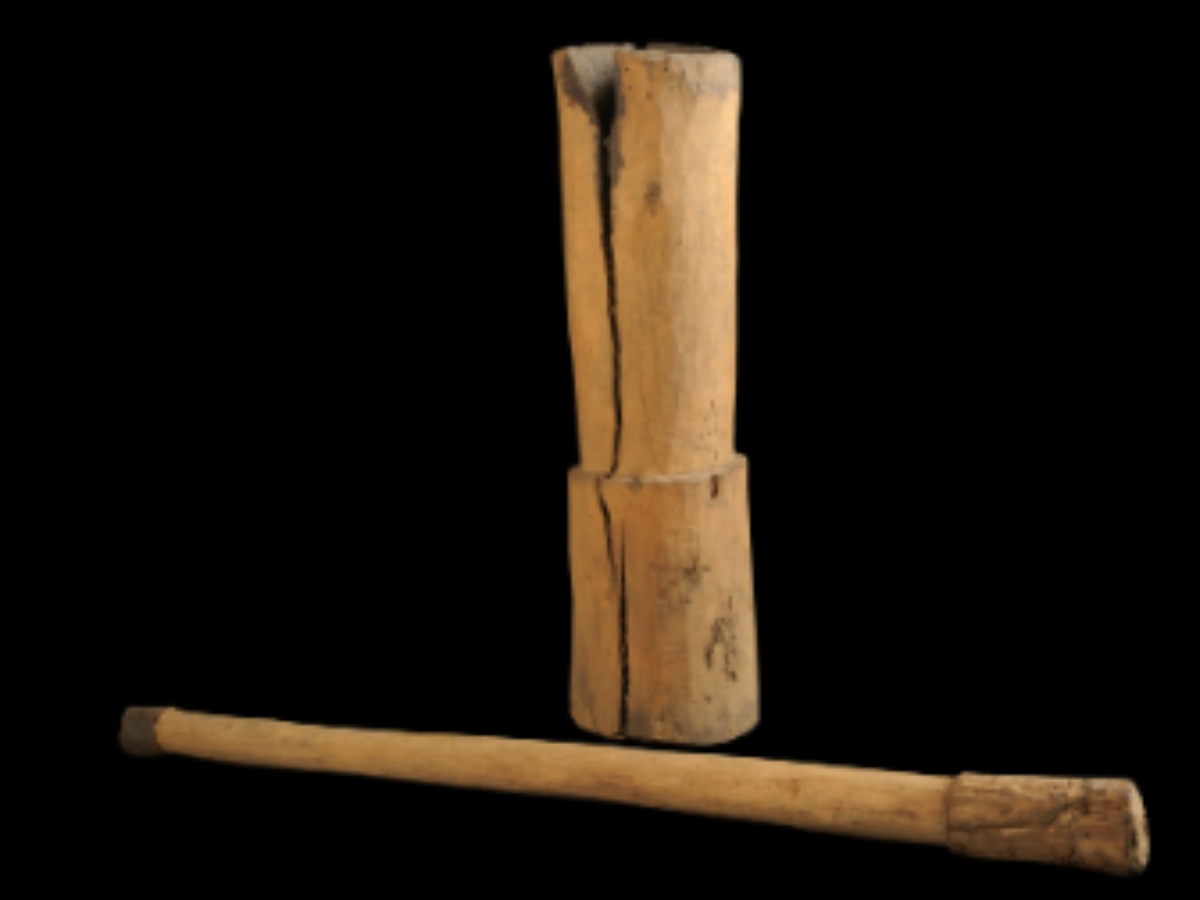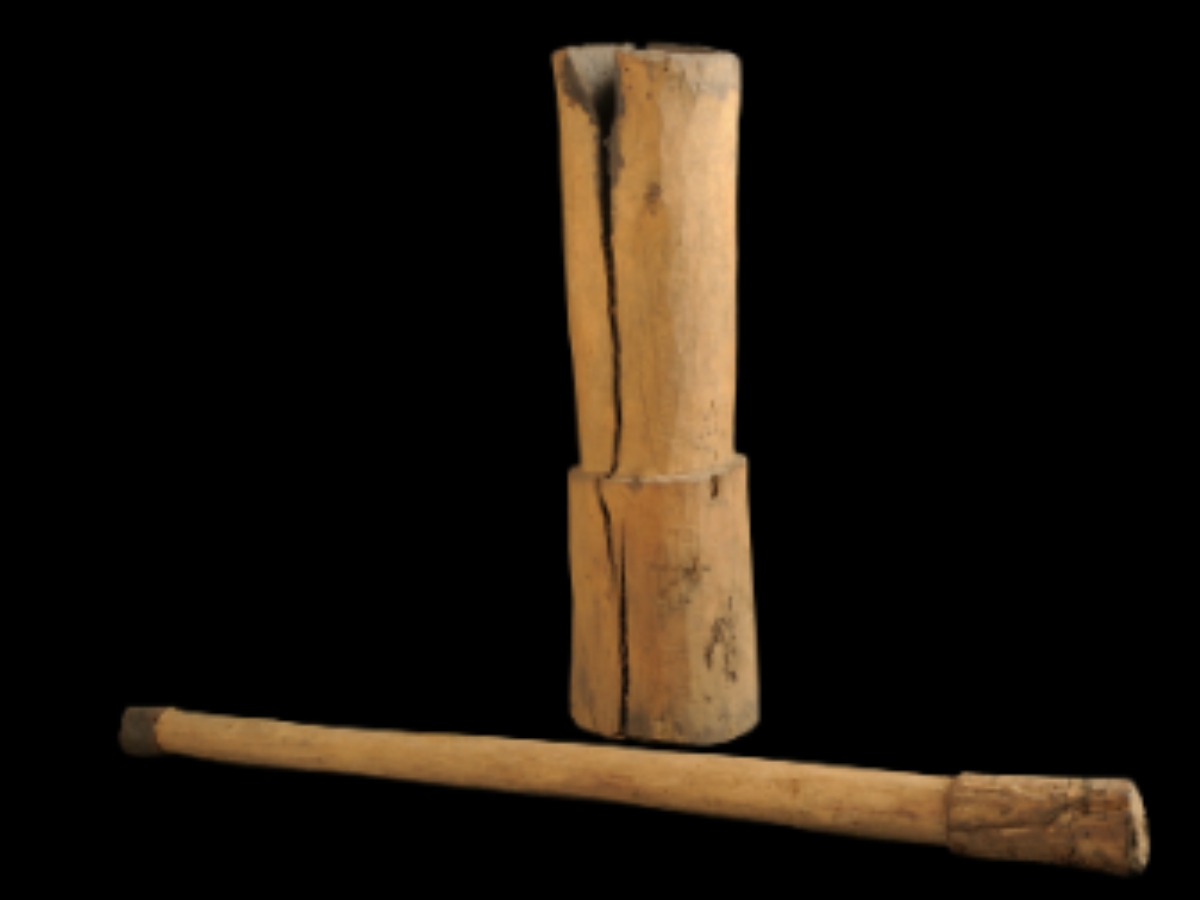State
Tribe Name
Art Type
short description
Some Tribes regarded as Particularly Vulnerable Tribal Groups (PVTGs); mainly dwellers of Jharkhand forests, are still among those to practice food processing and farming laced with cultural and environmental themes. Chief among these tools is a wooden mortar for pounding grains and leafy vegetables, a significant step in preparing and preserving food in their culture.
Thumbnail

Filter Postion
Left
Filter Background
Off
Theme
Filter Header Image

content
Image

description
Some Tribes regarded as Particularly Vulnerable Tribal Groups (PVTGs); mainly dwellers of Jharkhand forests, are still among those to practice food processing and farming laced with cultural and environmental themes. Chief among these tools is a wooden mortar for pounding grains and leafy vegetables, a significant step in preparing and preserving food in their culture.
The fact that the pounding end has great girth goes a long way in pulverizing tough grains and fibrous plant materials. According to the Birhor, women use this; hence it becomes more of a symbol of autonomy and indigeneous knowledge. The processing activity with this tool is also a very important part of the processing of forest products like wild leafy vegetables and millets, which are food staples for the Birhor. Such utensils also mirror the entire belief systems of the Birhor toward a sustainable life where they act upon the elements around themselves with an ally against harming the environment. The very wooden mortars act as witnesses to their artisanship since the skill has been handed down through generations. Today, if the mortars are found in institutions like the Indian Museum in Kolkata, it validates and affirms their daily existence and cultural practices among one of the oldest tribal communities in India.
The fact that the pounding end has great girth goes a long way in pulverizing tough grains and fibrous plant materials. According to the Birhor, women use this; hence it becomes more of a symbol of autonomy and indigeneous knowledge. The processing activity with this tool is also a very important part of the processing of forest products like wild leafy vegetables and millets, which are food staples for the Birhor. Such utensils also mirror the entire belief systems of the Birhor toward a sustainable life where they act upon the elements around themselves with an ally against harming the environment. The very wooden mortars act as witnesses to their artisanship since the skill has been handed down through generations. Today, if the mortars are found in institutions like the Indian Museum in Kolkata, it validates and affirms their daily existence and cultural practices among one of the oldest tribal communities in India.
Image Mode
landscape
promoted
On
Verified
Off
